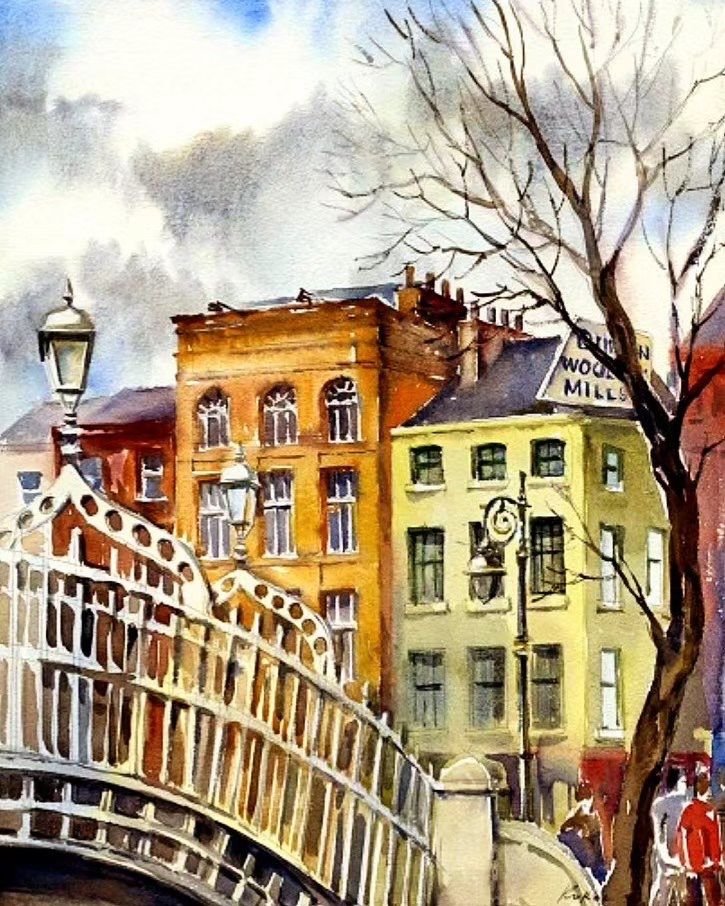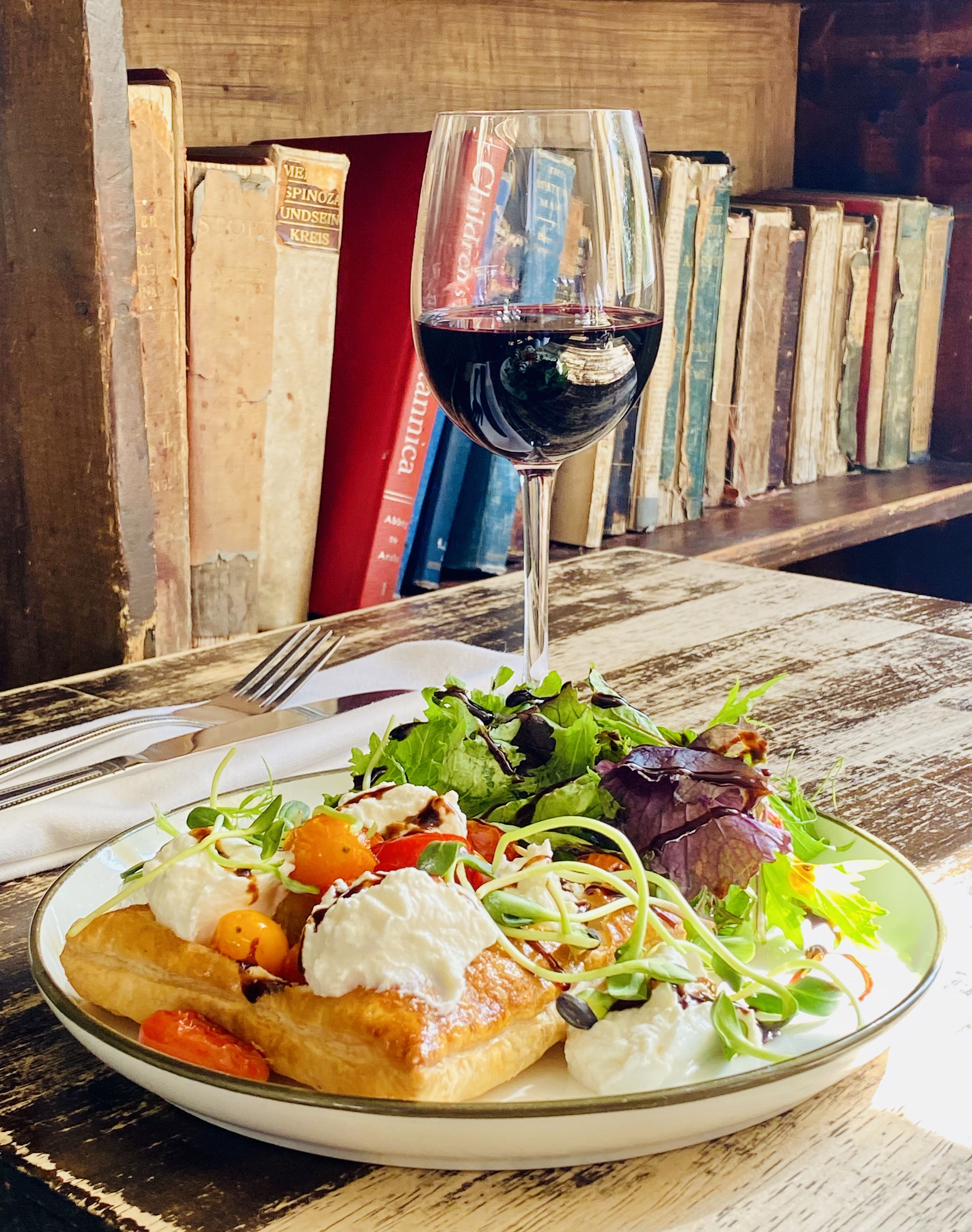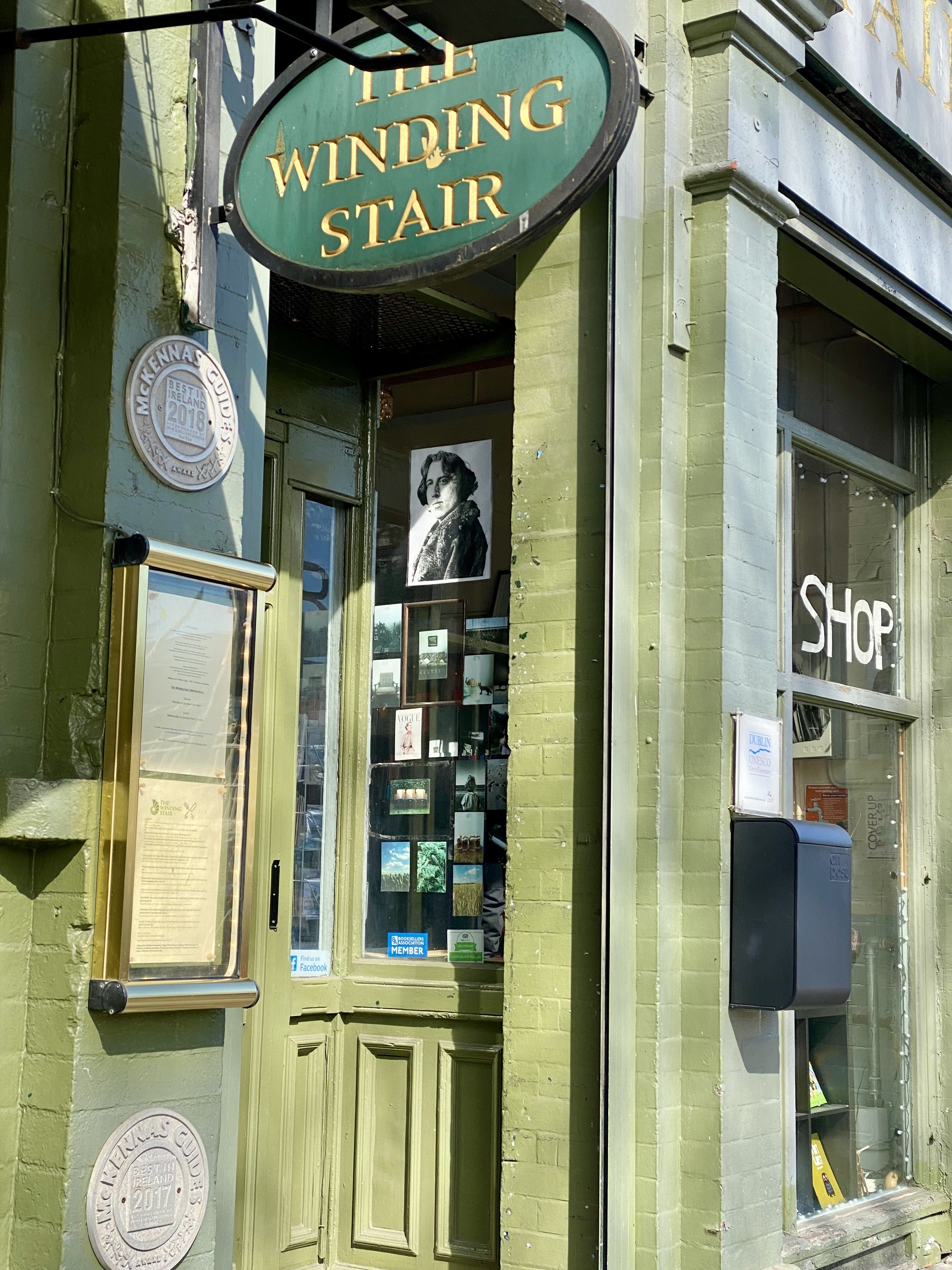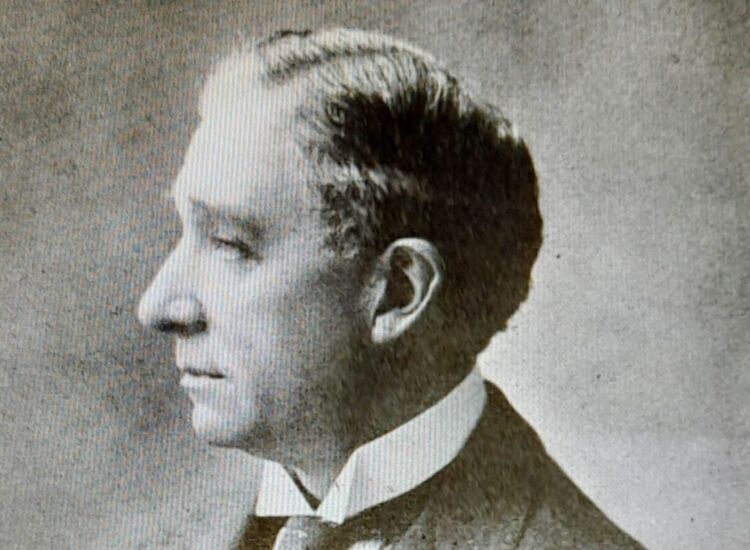Dublin’s Winding Stair bookshop is located in a beautiful, yellow-fronted building that dates to 1875. After various uses, including an auction house, art gallery, and toy shop, the four-story building (a protected structure by the Dublin City Council) opened as a bookshop and café in 1982 and quickly became a popular gathering spot for writers, musicians, and artists. Its name was inspired by a W.B. Yeats’ literary reference in one of his poems — "My soul. I summon to the winding ancient stair; Set all your mind upon the steep ascent" — and to the actual twisting staircase that leads to the upper floors. The shop on Dublin’s busy Ormond Quay Lower is a stone’s throw from the north steps of the Ha’penny Bridge, the iconic passageway over the Liffey that opened in 1816 as the first pedestrian bridge to cross the river.
A short ascent up the ancient stair leads to one of Dublin’s culinary treasures, The Winding Stair restaurant which was “rescued,” so to speak, by Elaine Murphy when its closure was announced in 2005. Admittedly obsessed by food and hospitality from a young age, Murphy’s foray into the restaurant business was not necessarily a planned one. She first studied history, politics, and sociology at Trinity College and then earned a music degree from the Dublin Institute of Technology. During her college years she worked in a number of restaurants, eventually managing the now-shuttered Mermaid on Dame Street, which she said informed and inspired her to open her own place with chef friend Ian Connolly.

The yellow-fronted Winding Stair painted by Ludmila Korol (korolart.com), an Irish-Ukrainian artist who specializes in oil paintings and fine art prints.
In 2006, Murphy brought the iconic Winding Stair back to life as a restaurant. The ground floor bookshop was retained, along with many of the old bookshelves, photos, and mementos from its heyday. The second and third restaurant floors maintain the “old Dublin” look, with charming, stripped wood tables and floors, Bentwood café chairs, old girders, exposed brick walls, mismatched crockery, and shelves filled with vintage books. Atmosphere aside, the menu champions what Murphy calls “actual Irish food” made with local ingredients from artisan producers.
One of the things Murphy told me when we met in September is that she didn’t want the menu to be a “contemporary twist” on Irish food. Rather, she wanted to bring back Irish food traditions — big plates of food with traditional ingredients your mother and grandmother would have used when she made a family meal: hand-smoked haddock, poached in milk with onions and white cheddar mash; Dublin Coddle; pork with garlic mash and cabbage. She revived those foods and more, and today vegan and vegetarian options keep the menu “interesting” with up-to-the-minute offerings ranging from harissa roasted courgettes with lentil and red pepper stew to heirloom tomato and ricotta tart or wild mushroom and spinach gnocchi.

Elaine Murphy.
The Winding Stair (winding-stair.com), open for lunch and dinner daily, has an impressive wine list, changing daily specials, and desserts for which you must save room. It also hosts events like weddings and private parties in the slightly more formal dining room on the third floor.
Murphy also owns three other northside restaurants, each with a sense of place in Dublin history: The Woolen Mills, adjacent to The Winding Stair, was formerly a haberdashery where James Joyce once worked; The Legal Eagle, a gastropub next to the Four Courts (1-2 Chancery Place, Inns Quay); and The Washerwoman, Glasnevin, located in a 18th century stone cottage.

Heirloom Tomato Tart.
STICKY PEAR & GINGER CAKE
Serves 8
I first tasted this pear cake at The Winding Stair in 2015. When you visit, you might find it on the menu topped with a scoop of vanilla ice cream or a dollop of crème fraîche.
For the cake
1/2 cup granulated sugar
1/2 cup (packed) light brown sugar
1 1/2 cups self-rising flour
1 tablespoon cinnamon
2 tablespoons ground ginger
2 teaspoons baking powder
2/3 cup canola oil
3 large eggs, beaten
3 pears, peeled and cored
For the sauce
1/4 cup Lyle’s Golden Syrup or light corn syrup
1 cup sugar
2 tablespoons water
2 tablespoons butter
1/2 cup heavy (whipping) cream
2 teaspoons ground ginger
Vanilla ice cream or crème fraiche, for serving
1. Make the cake. Preheat the oven to 350°F. Coat a 9-inch springform pan with no-stick baking spray; top with a round of parchment paper.
2. In a large bowl, whisk together the sugars, flour, cinnamon, ginger, and baking powder.
3. In a small bowl, whisk together the oil and eggs; fold into the flour mixture.
4. Grate two of the pears into the mixture; cut the other pear into slices. Arrange the pear slices, overlapping slightly, on the bottom of the prepared pan. Pour the mixture over the pears,
5. Bake the cake for about 45 minutes or until a skewer inserted into the center comes out clean. Let cool for about 15 minutes on a wire rack.
6. Make the sauce. In a medium saucepan, combine the syrup, sugar, and water. Cook over medium heat for 4 to 5 minutes, or until the sugar dissolves. Stir in the butter until smooth. Add the cream and ginger; cook until the sauce is smooth and thick.
7. To serve, remove the side of the pan. Invert the cake onto a large plate; remove pan base and parchment paper. Cut the cake into slices; spoon the sauce over the top. Serve with vanilla ice cream or crème fraiche, if you wish.
Margaret Johnson’s “Recipes” page also includes “Ireland Hopping: Adventures in Food, Drink, and Travel.” For further details on her work, or to order a signed copy of any of her cookbooks, visit irishcook.com








